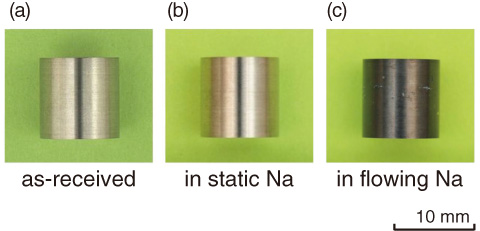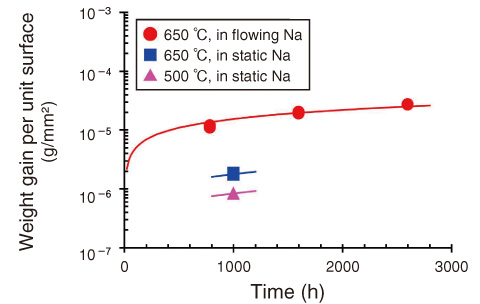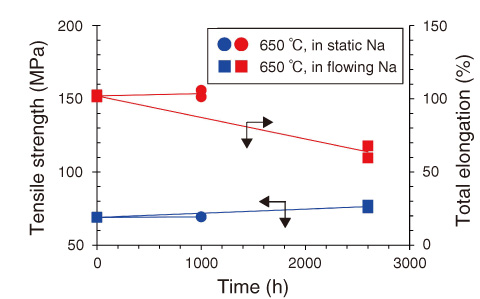
Fig.13-13 Zr alloys exposed to sodium at 500 °C for 1000 h

Fig.13-14 Weight change of Zr alloys in high-temperature sodium

Fig.13-15 Tensile properties of Zr alloys after sodium exposure
The materials used in sodium-cooled fast breeder reactors undergo long-term exposure to high-temperature sodium. Therefore, it is necessary to estimate the compatibility of these materials with sodium, that is, the corrosion behavior and its effect on the mechanical strength, as well as the inherent mechanical properties of the materials.
For the experimental fast reactor “JOYO”, the application of zirconium (Zr) alloy as a neutron reflector is being examined. The alloy does not contact sodium in the normal operating condition because it is inserted into a protective tube made from stainless steel. However, for reactor safety, it is necessary to ensure that a significant effect does not occur even if the protective tube is ruptured.
In this study, the compatibility of the Zr alloy with high-temperature sodium was examined. It was found that the surface became blackened only after exposure to flowing sodium, as shown in Fig.13-13. Moreover, a weight gain was observed with increasing temperature and elapsed time, as shown in Fig.13-14. It was due to oxygen diffusion into the Zr alloy from dissolved oxygen in the sodium. In the static sodium condition where the fill ratio of sodium was limited by the container size, the progress of oxygen diffusion was suppressed as the elapsed time increased because the amount of dissolved oxygen was also limited. On the other hand, oxygen diffusion into the Zr alloy continued in the flowing condition because dissolved oxygen was continually supplied by the flowing sodium. The behavior occurred because the affinity of Zr with oxygen was much higher than that of other steels such as stainless steel, so Zr tends to form a stable oxide thermochemically.
The mechanical properties were also changed by the environmental effect. Fig.13-15 shows the relationship between the tensile properties and the elapsed time. In flowing sodium, it was observed that the tensile strength increased and the total elongation decreased as the elapsed time increased. These were the typical embrittlement behaviors; however, the properties changed sluggishly.
We are advancing the investigation towards the application of the Zr alloy as the neutron reflector in “JOYO”.